Citation:
| REPRINT | 2.94 MB |
Abstract:
We compiled a large database of 58 059 point locality records for 70 species and 434 subspecies of heliconiinebutterflies and used these data to test evolutionary hypotheses for their diversification. To study geographicalpatterns of diversity and contact zones, we mapped: (1) species richness; (2) mean molecular phylogenetic terminalbranch length; (3) subspecies richness and the proportion of specimens that were subspecific hybrids, and (4)museum sampling effort. Heliconiine species richness is high throughout the Amazon region and peaks near theequator in the foothills and middle elevations of the eastern Andes. Mean phylogenetic terminal branch length islowest in the eastern Andes and tends to be low in species-rich areas. By contrast, areas of high subspeciesrichness, where subspecies overlap in range and/or hybridize, are concentrated along the course of the AmazonRiver, with the eastern Andes slopes and foothills relatively depauperate in terms of local intraspecific phenotypicdiversity. Spatial gradients in heliconiine species richness in the Neotropics are consistent with the hypothesis thatspecies richness gradients are driven at least in part by variation in speciation and/or extinction rates, resultingin observed gradients in mean phylogenetic branch length, rather than via evolutionary age or niche conservatismalone. The data obtained in the present study, coupled with individual case studies of recently evolved Heliconiusspecies, suggest that the radiation of heliconiine butterflies occurred predominantly on the eastern slopes of theAndes in Colombia, Ecuador, and Peru, as well as in the upper/middle Amazon basin. © 2012 The Linnean Societyof London, Biological Journal of the Linnean Society, 2012, 105, 479–497.
Notes:
doi:10.1111/j.1095-8312.2011.01814.x
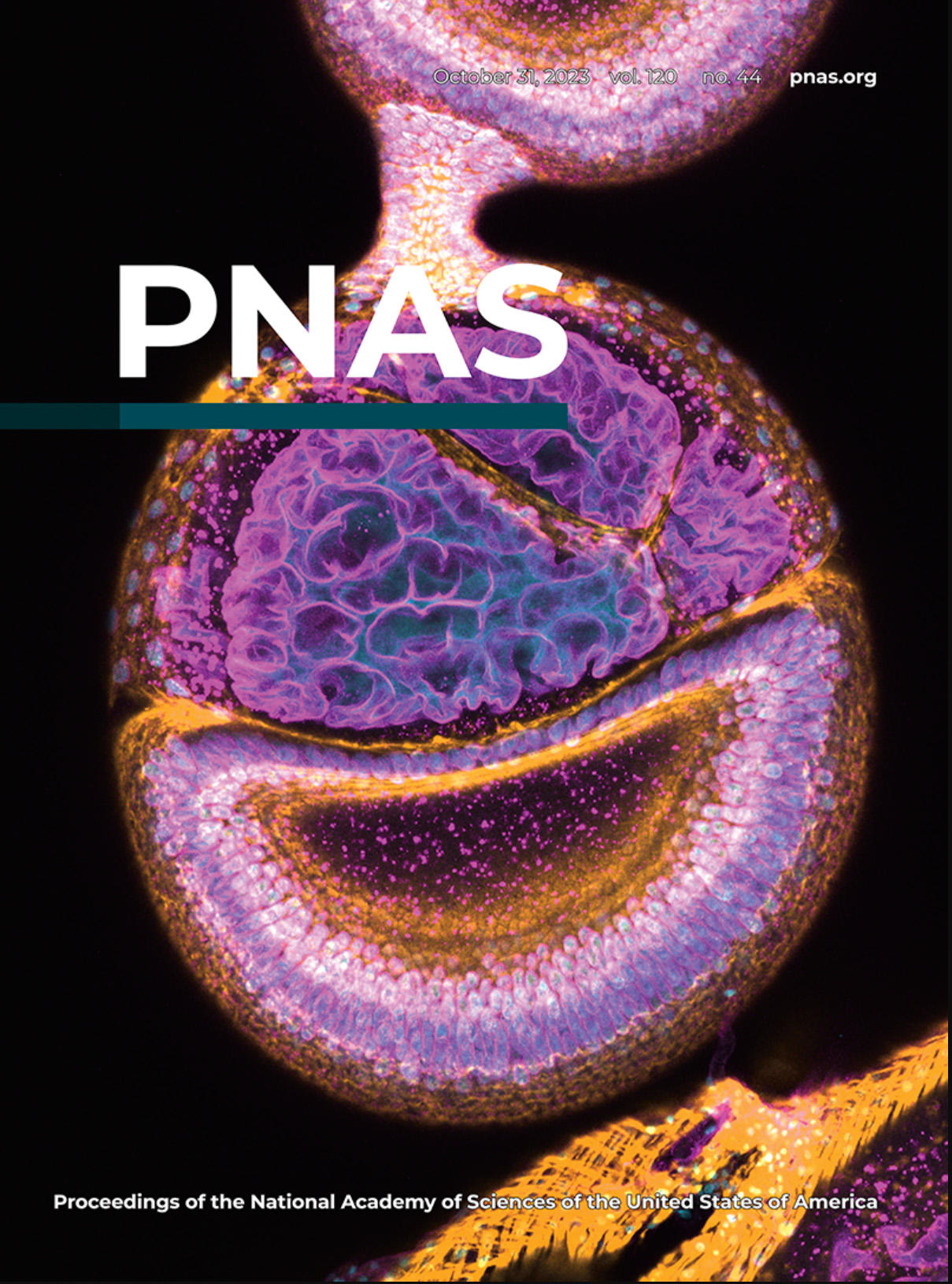
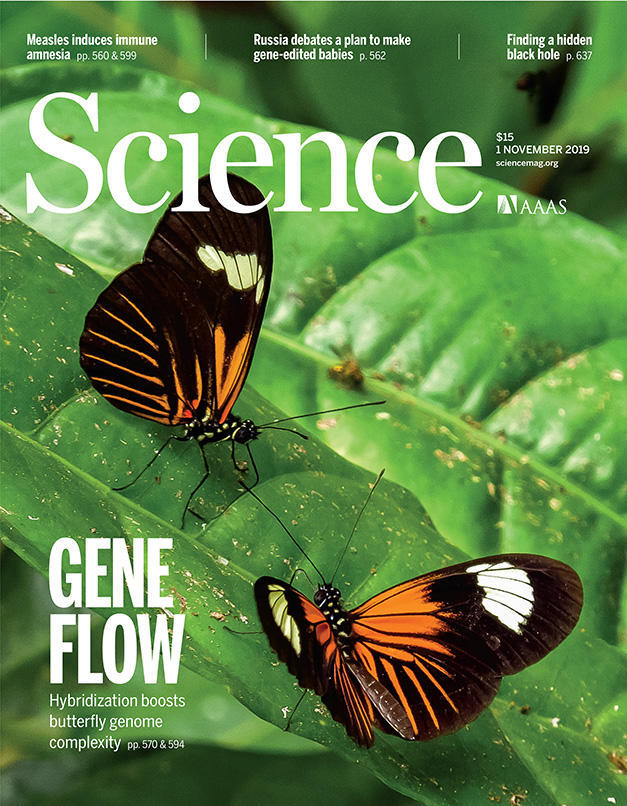
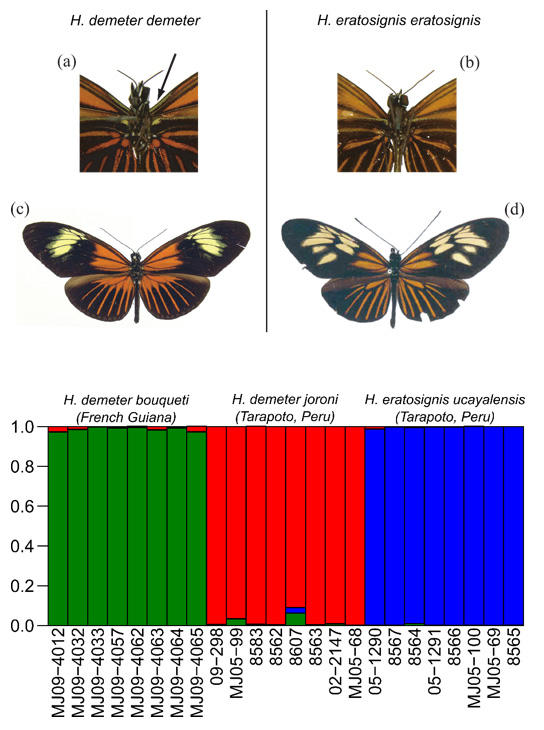

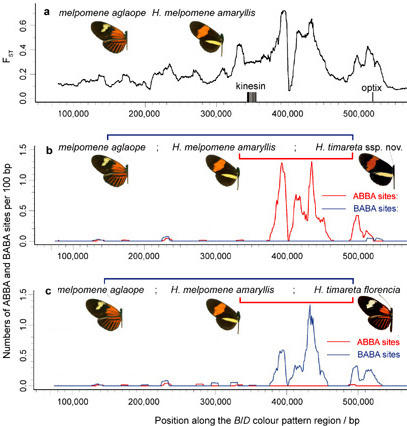
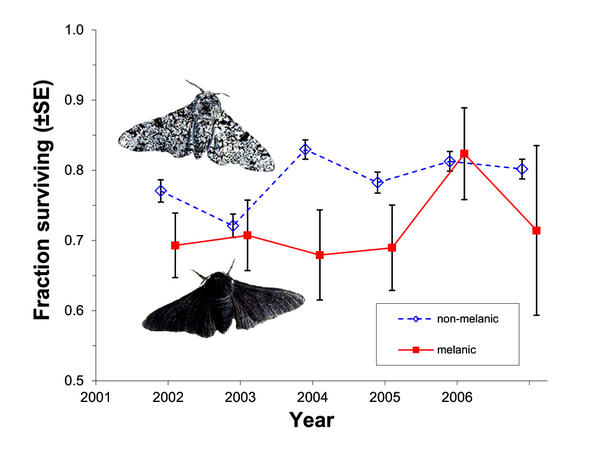 Selection against melanism in UK after the Clean Air Act.
Selection against melanism in UK after the Clean Air Act.